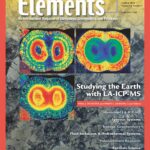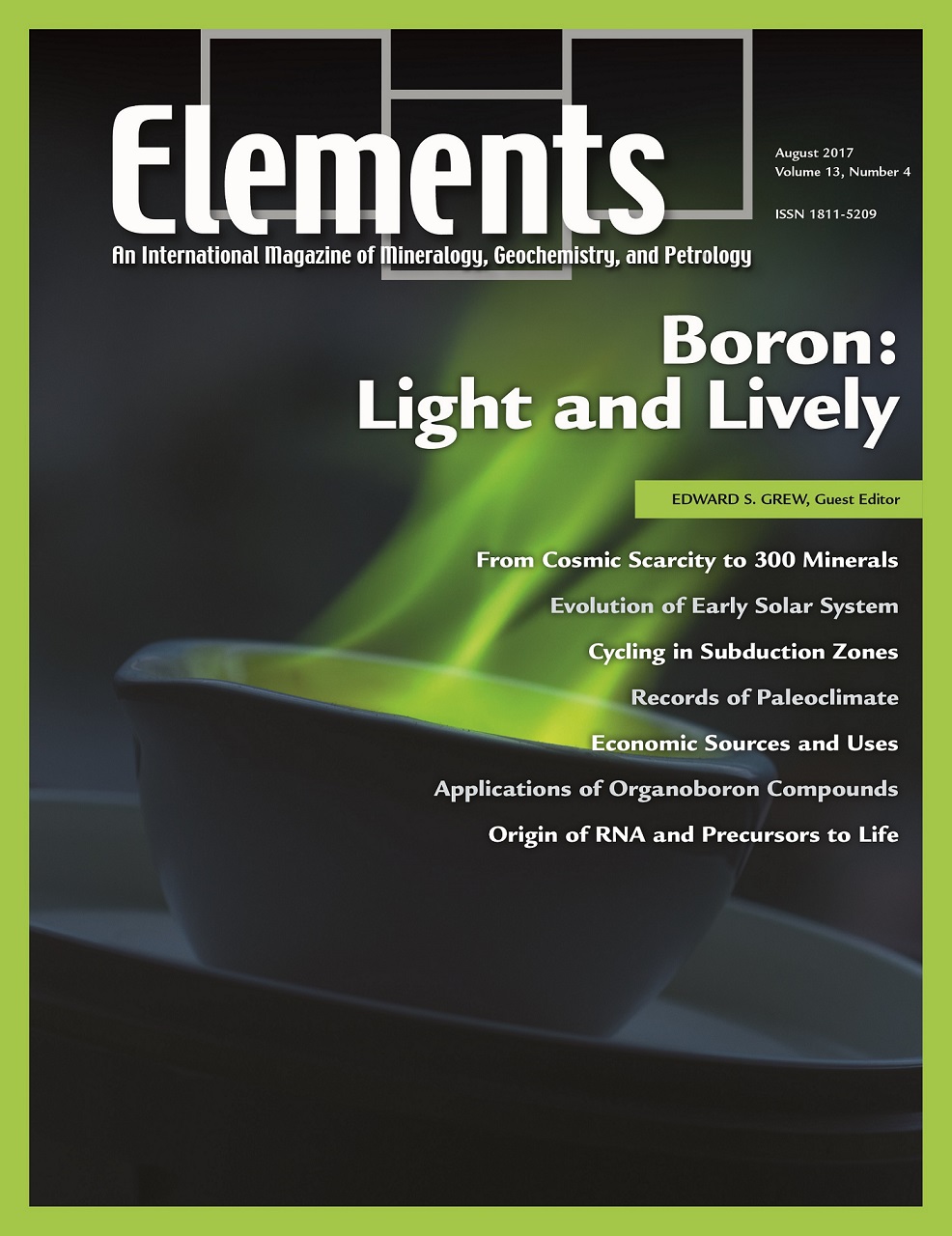
Studying The Earth Using La-ICPMS, October 2016, Vol. 12, No. 5
June 28, 2024
Mineral Resources And Sustainable Development, October 2017, Vol. 13, No. 5
June 28, 2024Boron: Light And Lively, August 2017, Vol. 13, No. 4
$20.00
Fifth in the periodic table, boron is a “light” element whose origin has puzzled astronomers because it is not created in stars. It is “lively”, being an essential element for plants, and having medicinal proper ties, which has stimulated synthesis of organic compounds containing boron.
Boron: Light And Lively
August 2017, Vol. 13, No. 4
Fifth in the periodic table, boron is a “light” element whose origin has puzzled astronomers because it is not created in stars. It is “lively”, being an essential element for plants, and having medicinal proper ties, which has stimulated synthesis of organic compounds containing boron. Borates such as colemanite are thought by some to have stabilized ribose, an essential component of ribonucleic acid and critical for the self-assembly of prebiotic organic compounds to constitute life; others have proposed that ribose was stabilized by borate in solution. Boron isotopes provide insight on the processes responsible for the creation of continental crust, and act as a proxy for paleoclimate. Extreme concentrations of boron result in economic evaporitic deposits, and, thus, watersoluble boron minerals, notably borax, have been among the most accessible of useful compounds to humankind, even in antiquity.
Why You’ll Love Elements Magazine:
- Expert Contributors: Articles written by renowned researchers in the field of geoscience.
- Engaging Content: Join a community of readers who are passionate about Elements.
- Exceptional Quality: Each issue is printed on high-quality paper with stunning visuals and detailed illustrations that bring complex scientific concepts to life.
Order your copy of the August 2017 issue of Elements magazine today and discover boron: light and lively.
Related products
-
Water On Mars, June 2006, Vol. 2, No. 3
$20.00During the past several decades, spacecraft data have transformed the planets from astronomical objects into geologic worlds. Mars is the current focus of planetary exploration, and NASA’s objectives for this effort are based on the theme, “follow the water.
-
Nanogeoscience, December 2008, Vol. 4, No. 6
$20.00At first glance, nano and Earth seem about as far apart as one can imagine. Nanogeoscience seems to be a word connecting opposites.
-
Diamonds, March 2005, Vol. 1, No. 2
$20.00Diamond, the fascinating ultrahard mineral, is the focus of considerable interest and scientific research. Recent advances particularly relevant to geoscientists include: diamond as a recorder of Earth processes from the perspective of inclusions, chemistry, and conditions of formation; synthesis for research applications and processing to modify color and physical properties, important to diamond gems and anvils; the implications of nanodiamonds from meteorites.




